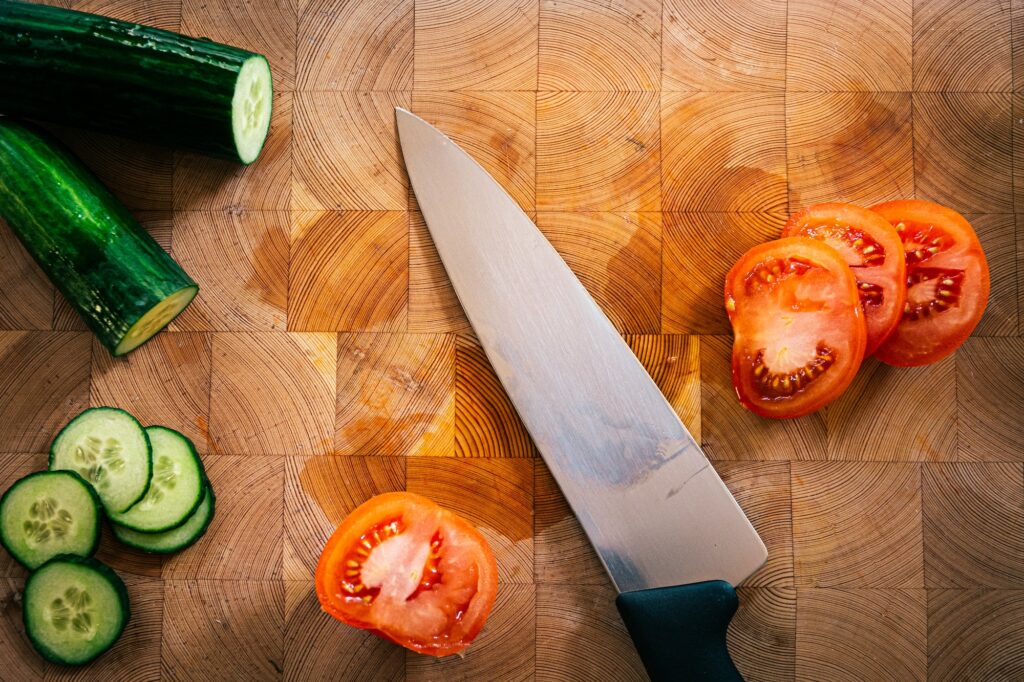Why Its Essential to Replace Cutting Boards with Deep Cuts?
Written By James Morgan
Barbecue enthusiasts and home cooks alike often overlook the importance of maintaining a proper cutting board. Many people don't realize the hidden dangers lurking within those deep cuts and grooves that develop over time. So, why is it important to get rid of a cutting board with deep cuts in it? This article will delve into the critical reasons for this precaution and provide practical tips for keeping your kitchen and barbecue prep both safe and enjoyable.

Hidden Dangers: Bacteria and Contamination
Why Deep Cuts Are Problematic
When a cutting board develops deep cuts, it becomes a breeding ground for harmful bacteria. These grooves can harbor food particles and moisture, which create an ideal environment for bacteria like E. coli and Salmonella. This is especially worrying for barbecue enthusiasts who often handle raw meat, which is already prone to contamination.
Bacteria can be easily transferred from the cutting board to other food items, leading to cross-contamination. Even thorough washing might not be enough to eliminate all the bacteria hidden in those deep cuts. For more on the risks and safe food handling tips, visit Cutting Truth: Chopping Board Hygiene.

Impact on Flavor and Quality
Maintaining Pure Flavors
Deep cuts in your cutting board can also trap and retain odors from previous food prep, which can interfere with the flavors of your current endeavor. Imagine slicing fragrant herbs on a board that previously held raw fishthose flavors will mix, and the outcome will not be pleasant.
For barbecue enthusiasts, keeping flavors pure is paramount. A compromised cutting board can ruin the delicate balance of spices and seasonings you're striving to achieve.

Compromised Structural Integrity
Durability and Safety Issues
A cutting board with deep cuts can lose its structural integrity over time, making it more susceptible to breaking or splintering. This not only poses a physical risk but can also result in small bits of wood or plastic contaminating your food. For tips on how to maintain and care for your cutting boards, check out How to Seal a Cutting Board.

Proper Maintenance and Replacement
Signs Its Time to Replace
Recognizing when its time to replace your cutting board is crucial. Look for signs such as multiple deep cuts, splintering, and discoloration. Regular maintenance can extend the life of your cutting board, but there comes a time when replacement is the best option. For insights into maintaining your board, check out How to Hydrate Wood Cutting Boards.
Types of Cutting Boards: Choose Wisely
Wood vs. Plastic
Each type of cutting board has its pros and cons. Wooden boards are generally easier on your knives and can be sanded down to remove cuts. However, they require more maintenance. Plastic boards are easier to sanitize but can get deep cuts more easily than wood. For a detailed comparison, visit Wood vs. Plastic Cutting Boards.
FAQ Section
1. How often should I replace my cutting board?
It depends on the material and condition. Generally, wooden boards can last longer with proper maintenance, while plastic boards may need replacing every few years.
2. Can I repair deep cuts on my cutting board?
For wooden boards, you can sand down the surface to remove shallow cuts. For plastic boards, its usually best to replace them.
3. Whats the best way to sanitize a cutting board?
Use hot, soapy water to scrub the board thoroughly. You can also use a solution of one tablespoon of bleach per gallon of water for plastic boards. For more tips, see Sanitizing Cutting Boards.
For those who consider their kitchen a sanctuary for culinary creation, replacing a worn-out cutting board is a small yet significant step towards ensuring delicious and safe meals. Keep your barbecue endeavors flavorful, your kitchen safe, and your food free from contamination.
As an Amazon Associate, I earn from qualifying purchases.



